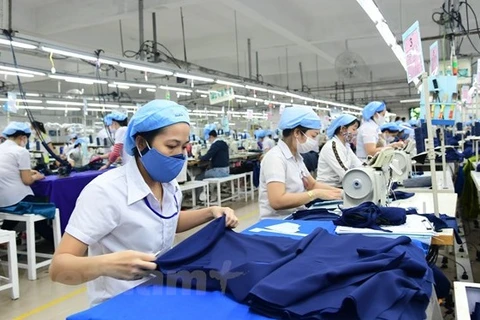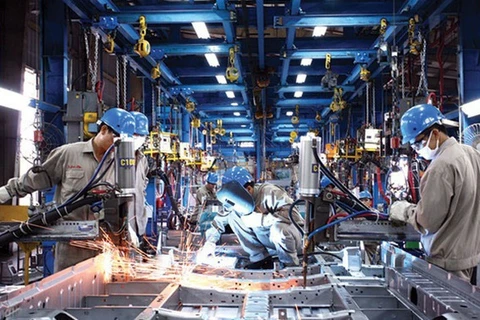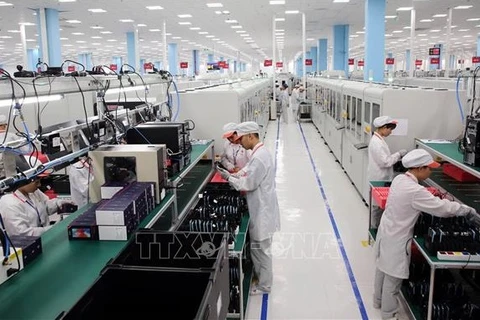 Production at Chinese-invested Jasan Textile and Dyeing Vietnam Co., Ltd. at Hai Phong's Vietnam-Singapore Industrial Park (VSIP). (Photo: VNA)
Production at Chinese-invested Jasan Textile and Dyeing Vietnam Co., Ltd. at Hai Phong's Vietnam-Singapore Industrial Park (VSIP). (Photo: VNA)This preliminary assessment was made by the ASEAN+3 Macroeconomic Research Office (AMRO) after its Annual Consultation Visit to Vietnam from May 3 - 18.
“The Vietnamese economy is expected to grow at 6.3 percent in 2022 and 6.5 percent in 2023. Inflation is projected to remain contained,” said AMRO Group Head and Lead Economist Kalra. “This positive outlook rides on strong external demand, a recovery in domestic consumption and healthy investments inflows, bolstered by an appropriate macroeconomic policy stance.”
The domestic outbreak of the Omicron variant receded sharply in April 2022, and border restrictions and domestic containment measures were eased. The aggregate output gap is expected to narrow significantly by the end of this year. The recovery is, nevertheless, uneven across sectors. While both the manufacturing and service sector outputs have surpassed their 2019 levels, the service sector still has pockets of distress, especially in the tourism, hospitality and logistics sectors.
Consumer price inflation is projected to remain below 3.5 percent in 2022, as authorities plan to utilise their oil price stabilisation fund and administer prices to offset pressures emanating from global developments in energy prices.
Given the economy’s cyclical position, AMRO recommended Vietnam to adopt a mildly supportive fiscal policy stance in 2022. With the availability of fiscal space and the uneven recovery across economic and social sectors, policy should provide targeted support to those that continue to be dislocated by the pandemic, especially micro- , small- and medium-sized enterprises (MSMEs) and low-income households.
Monetary conditions should be normalised to contain inflationary pressures and reduce financial imbalances that emerged in the environment of low interest rates. However, it is essential to ensure that financing needs of vulnerable MSMEs and households are met, and that sufficient funding is available to productive sectors. The State Bank of Vietnam should continue to allow greater exchange rate flexibility, as it balances growth, inflation and financial sector stability objectives, according to AMRO.
On the financial stability front, efforts are needed to increase provisioning and capital buffers to prepare for an increase in impaired assets, in view of the impending expiry of the forbearance policy. A macroprudential policy framework needs to be put in place, including to address imbalances in the real estate market.
As Vietnam progresses beyond the lower middle income country status, it will need to implement reforms across a broad range of issues and sectors to mobilise financing for growth and development and to strengthen investor confidence, AMRO emphasised./.
VNA























